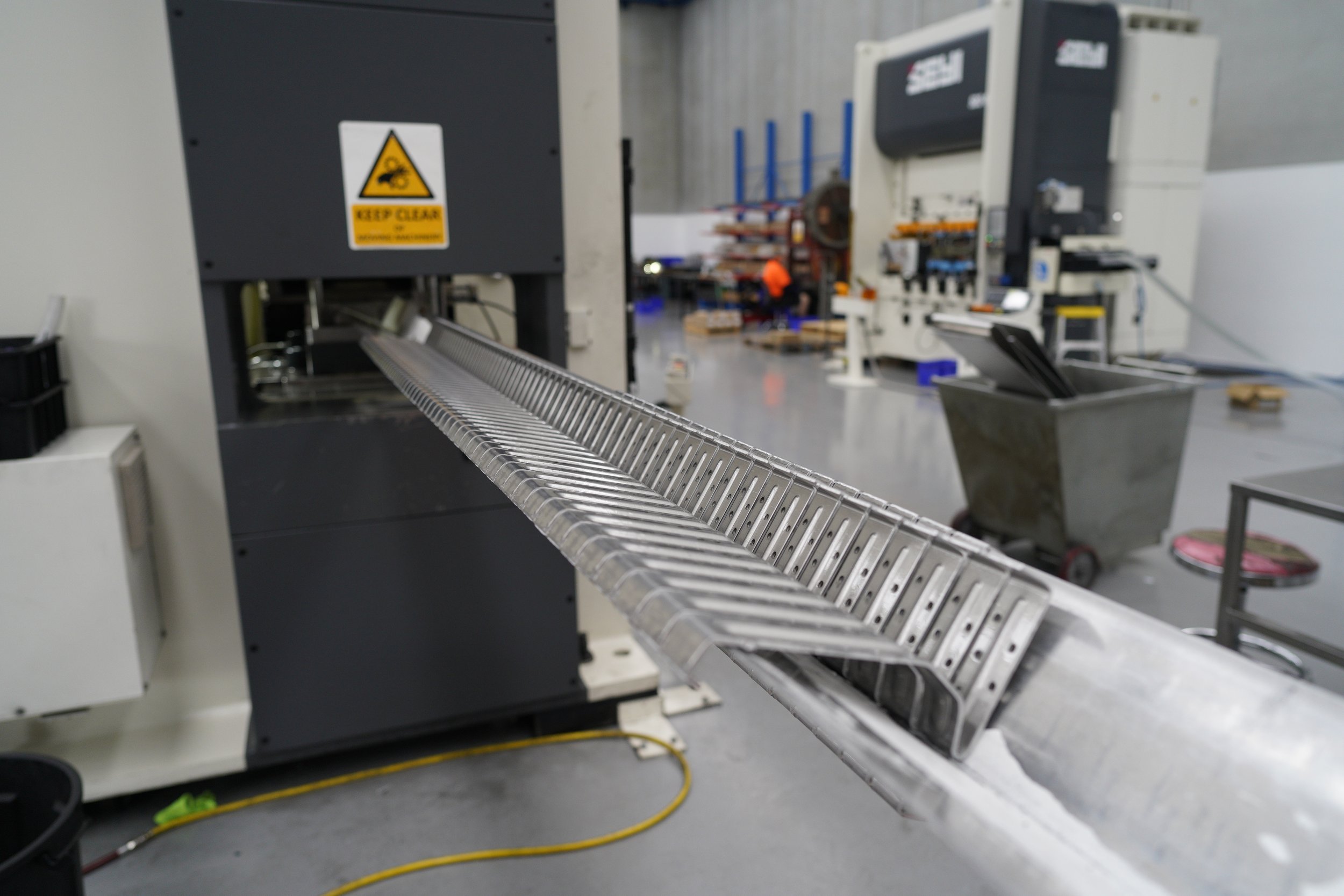
Deep
Drawing
Turn flat sheets into 3D shapes with deep drawing
Deep drawing is a specialised sheet metal forming process used to create three-dimensional shapes from flat sheet metal blanks. It is commonly employed in the manufacturing of various components and products, including automotive parts, kitchenware, and industrial containers. The process involves the transformation of a flat sheet metal into a hollow, seamless shape with depth using a punch and die set. Here's a breakdown of the deep drawing process:
Blank preparation
A flat sheet metal blank, typically made of materials like steel, aluminium, or copper, is prepared. The size and thickness of the blank depend on the desired final shape and dimensions of the deep-drawn part.
Placement of the blank
The sheet metal blank is placed over the die, which is a specially designed tool that defines the shape of the final part. The die is typically made of a hardened material to withstand the high forces and pressures involved in the deep drawing process.
Drawing
A punch, positioned above the blank, exerts force to push the material into the die cavity. The blank is drawn into the die cavity by the movement of the punch. The sheet metal material undergoes plastic deformation, stretching, and thinning as it conforms to the shape of the die.
Forming the part
As the punch continues to apply force, the blank progressively takes on the desired shape, forming a deep-drawn part with a hollow, three-dimensional geometry. The depth of the drawn part is determined by the stroke length of the punch.
Trim and finish
After the deep drawing process, excess material, known as the flash, may be trimmed off to achieve the final dimensions and remove any irregularities. Additional finishing processes, such as deburring or surface treatments, can be applied to enhance the appearance and functionality of the deep-drawn part.
Deep drawing offers several advantages in sheet metal manufacturing
Complex geometries
The process allows for the creation of complex shapes, including cylindrical, conical, and box-like structures, with minimal joints or seams. This makes it suitable for producing parts with excellent structural integrity and aesthetic appeal.
Material efficiency
Deep drawing maximises material usage since it involves minimal scrap generation. The ability to form seamless parts reduces the need for welding or joining multiple components, resulting in stronger and more efficient designs.
Cost savings
The elimination of additional assembly steps and reduced material waste contribute to cost savings in production. Deep drawing also enables high-volume production, further reducing per-part costs.
Strength and durability
Deep-drawn parts benefit from increased strength due to the plastic deformation of the material during the process. The absence of welds or seams enhances the overall structural integrity and durability of the finished product.
Discover the benefits of deep drawing for yourself
Deep drawing is a versatile and efficient manufacturing process that offers numerous possibilities for creating complex, high-quality sheet metal components. Its wide range of applications and benefits make it a preferred choice in various industries. If you think you could benefit from deep drawing manufacturing, get in touch with us today.
